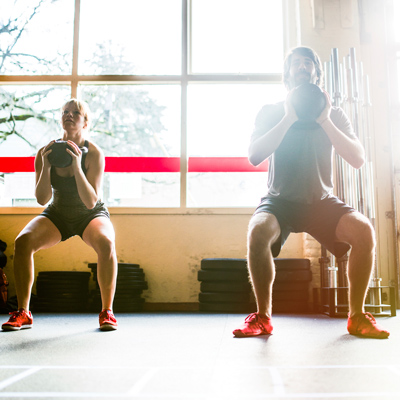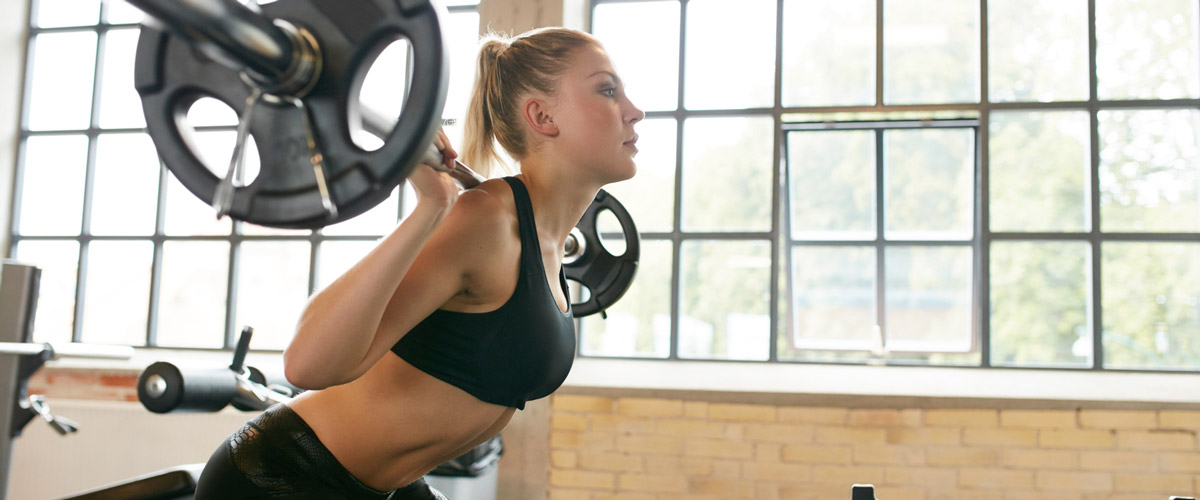What seems to be the new fad these days? Growing that booty of course! Typically we incorporate squatting into or workout routines when we are trying to grow muscle in our butts. This is one of the most common ways both men and women use to grow their booty’s. When squatting we always want to make sure we have perfect form, consistently. This will allows us to get the best results as well as avoid potential injury. A simple body weight squat seems pretty easy to most as it is similar to sitting in a chair, but there are common mistakes people make when performing this exercise. Once people feel they have mastered the body weight squat they tend to add weight – and extra weight combined with bad form is the perfect recipe for injury. Here are six common squatting mistakes and how to correct them to perform stronger squats.
1. Pins That Are Too High
Putting your pins too high on the squat rack gives you unnecessary challenges that can strain your back. If you have to go on your tiptoes to get the bar off of the rack, it is too high. By the time you have gotten the weight off of the rack you will have lost a great deal of tension that you have worked very hard to generate. Make sure you move the pins to a height that suits you, and remember having pins that are a little too low is always better than pins that are slightly too high.
2. Breathing Incorrectly
Yes – the way you breathe is a very important factor when performing squats! The two most common breathing mistakes are taking a breath as you make your way down to the bottom of your squat and taking a breath into your chest instead of into your belly. Taking a breath into your belly helps to create intra-abdominal pressure, making your squat more effective. Always take this breath before you begin the lift to maximize pressure before you begin your movement.
3. Knees Going Too Far Forward
When squatting you should always envision an imaginary line that comes straight up from your toes. Your knees should never pass over this line, and if they do you should try sitting back more into your squat.
Related: The Squat Wedge: A Workout Tool Your Knees Need Today
4. Shallow Squats
 Always try to squat as low as you can, to a point where your thighs are parallel to the floor with about a 90-degree knee bend. Your glutes and hamstrings do more work when the squat is deeper. You will notice less leg development if you perform shallow squats, as you are shortchanging your range of motion. Often people want to load up the bar with heavy weight but can only squat a few inches down, this will not help you grow muscle. Take off the extra weight so you can perform a squat with better form – you will get more out of the exercise and build more muscle.
Always try to squat as low as you can, to a point where your thighs are parallel to the floor with about a 90-degree knee bend. Your glutes and hamstrings do more work when the squat is deeper. You will notice less leg development if you perform shallow squats, as you are shortchanging your range of motion. Often people want to load up the bar with heavy weight but can only squat a few inches down, this will not help you grow muscle. Take off the extra weight so you can perform a squat with better form – you will get more out of the exercise and build more muscle.
Try our 5 Minute Booty Challenge
5. Rounding Your Back
Always keep your back flat when you are squatting, it helps if you keep your eyes looking straight forward. When you have a loaded bar with weight and have a rounded back this puts stress on your intervertebral discs, making you highly susceptible to injury. Keep your chest up and your elbows back when completing the movement. If you still are unable to do so you probably have too much weight on the bar.
6. Lifting Heels From the Ground
When squatting you should always think about pushing your heels into the ground, and not at the top of your feet. The barbell is aligned with your ankles at all times which is putting pressure onto your heels. If you feel as if you are putting more pressure on your toes you are more likely to strain your back and you should sway back onto your heels when performing the squat.




